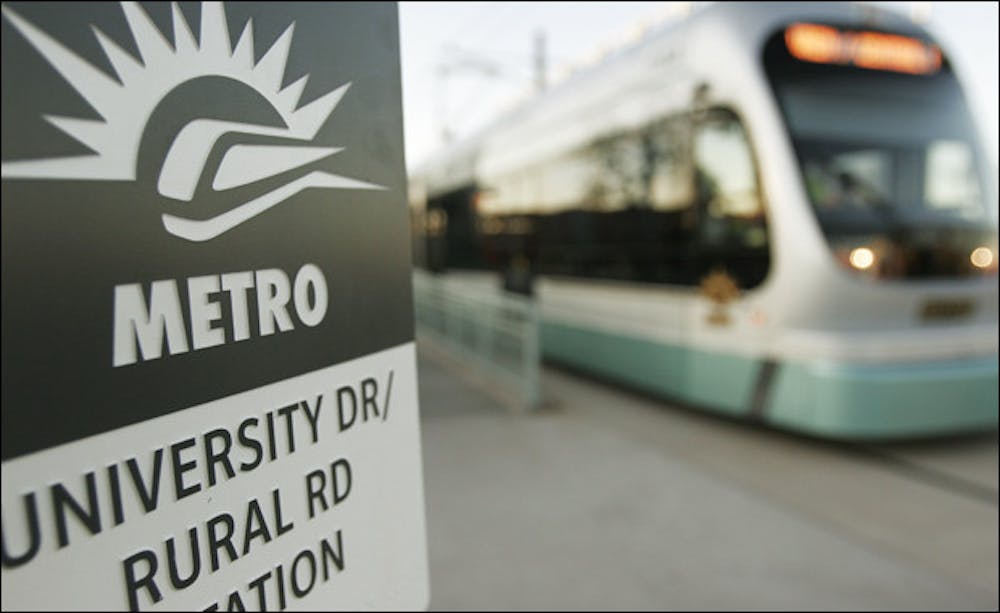An ASU professor is leading a federally-funded project designed to test new software by using it to analyze ridership patterns and potential expansions of the light rail system set to open in December.
Engineering professor Ram Pendyala said that if the software works well and the results of the project are applicable, Valley Metro could use them to help plan extensions to the light rail line.
“[Maricopa Association of Governments] and Valley Metro have said that if these results look valid and stand the test of scrutiny … they could incorporate them into their planning,” Pendyala said.
Developed by the Federal Highway Association, the software, called TRANSIMS, is designed to predict traffic patterns in a city, said association spokesman Doug Hecox via e-mail.
“TRANSIMS is a toolkit for modeling how and when people and vehicles move within a city,” Hecox wrote. “The ‘micro’ tools simulate individual people walking or riding in specific vehicles on a second-by-second basis.”
Pendyala said the bulk of the project will involve collecting data and testing the software. When the light rail line opens in December, TRANSIMS forecasts of traffic and ridership patterns will be tested against actual data collected.
After these testing phases have been completed, Pendyala and a team of consultants will look into several potential rail system expansions, including Mesa’s Main Street and a line going to the Northwest Valley.
ASU students had their own suggestions about extensions to the light rail. Secondary education sophomore Zachary Shepherd said developers should look into Camelback, Indian School and Thomas Road’s as possibilities for the next light rail route.
“During rush hour, they’re practically at a standstill,” Shepherd said. “[Light rail] would really help the traffic situation in those places.”
Chicano studies senior Fernando Aponte said the lack of public transportation on the far northern and western edges of the Valley made them ideal areas for the next light rail routes.
“They should extend it more to the west side, at least to Metrocenter,” Aponte said. “Most of the public transportation goes along the main roads, like McDowell [Road], but there are a lot of people on the north and west sides that need it.”
Reach the reporter at derek.quizon@asu.edu.




